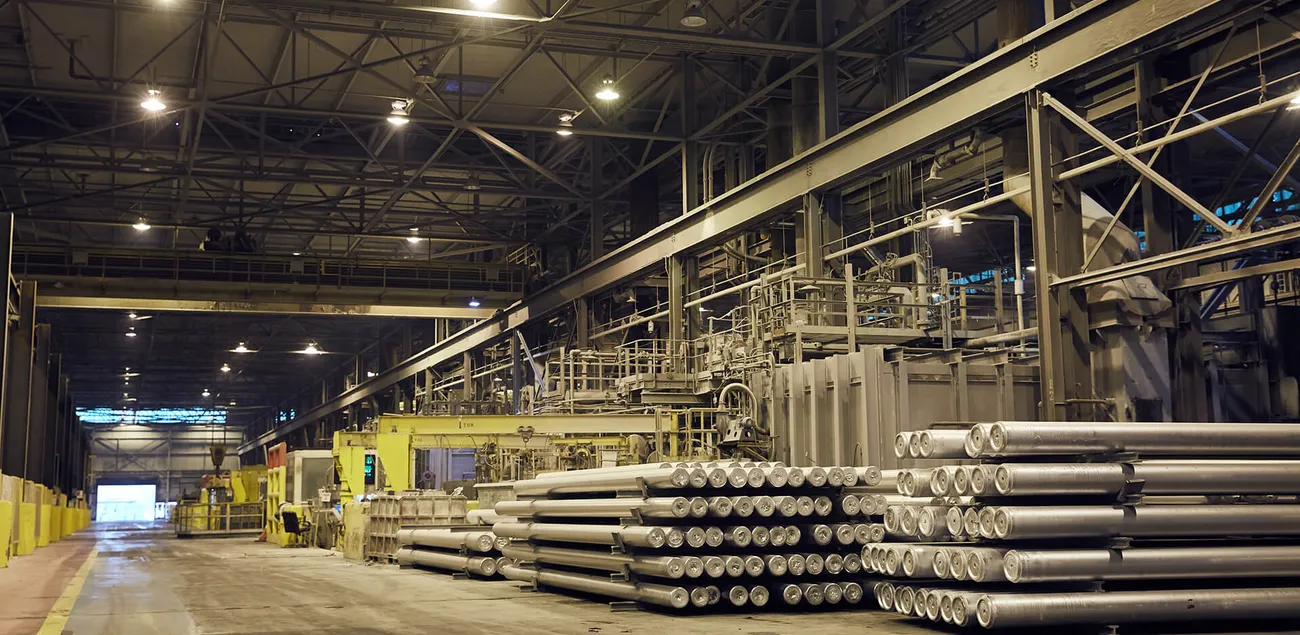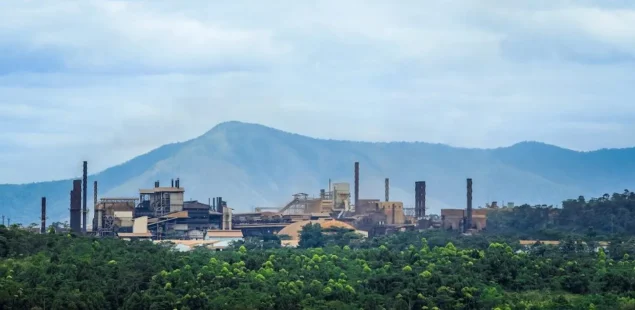
Western metal smelting operations face an unprecedented crisis as competition with technology companies for electricity resources drives power costs beyond economically viable levels, threatening government efforts to reshore critical industrial capacity. The crisis has intensified as artificial intelligence data centers consume increasing amounts of electricity, with tech companies willing to pay double traditional industrial rates to secure power supplies, fundamentally altering energy market dynamics across the United States and Europe.
Tech Companies Outbid Traditional Industry by 150%
The competition for electricity has reached extreme levels, with technology companies offering $100-115 per megawatt-hour for long-term power contracts while aluminum smelters require prices below $40 per megawatt-hour to maintain viability. Microsoft’s agreement with Constellation Energy to restart the Three Mile Island nuclear facility at $115 per megawatt-hour exemplifies the pricing gap that has made traditional industrial operations uncompetitive in power markets.
The Aluminum Association estimates that tech companies “have no limit on what they are prepared to pay for dependable 24/7 electricity,” creating an impossible competitive environment for energy-intensive industries that operate on thin margins. This pricing differential has effectively priced aluminum, zinc, and other metal smelters out of electricity markets, forcing facility closures and production curtailments across Western nations.
Data centers are forecast to account for up to 12% of all US electricity demand by 2028, compared to current levels of approximately 4%, creating unprecedented strain on grid capacity and driving electricity prices higher across all sectors. The explosive growth reflects artificial intelligence applications that require massive computational power and continuous electricity supply to maintain operations.
Aluminum Industry Faces Structural Collapse
The United States aluminum industry has contracted dramatically from 33 smelters with 5 million tonnes of annual capacity in 1980 to just 6 facilities today, with only 4 operating at full capacity and total production declining to 700,000 tonnes annually. Rising electricity costs represent the primary driver of this decline, with power averaging $73.42 per megawatt-hour in states hosting idle aluminum capacity, nearly double the $40 per megawatt-hour threshold required for economic viability.
Hydro CFO Christopher Christensen emphasized that electricity costs account for approximately one-third of aluminum smelting costs, making power pricing the decisive factor in facility location decisions. The company’s data shows US electricity prices averaged nearly twice Canadian levels in 2024, while Canadian smelters benefit from hydroelectric power costing $26.50-41 per megawatt-hour.
The crisis extends beyond individual company struggles to threaten strategic industrial capacity, with aluminum smelting requiring 14,821 kilowatt-hours of electricity per tonne of metal produced. A modern 750,000-tonne smelter consumes more electricity than the city of Boston, creating massive power requirements that compete directly with data center demand.
European Smelters Face Similar Pressures
European metal smelters have experienced similar challenges, with Nyrstar curtailing production by up to 50% at its three European zinc smelters due to electricity costs exceeding €200 per megawatt-hour in 2021. The company’s CEO Daniel Vanin described the situation as economically unfeasible despite operating fully electrified facilities powered by renewable energy sources.
European electricity prices have increased dramatically, with basic costs rising above €500 per megawatt-hour in some markets, representing a 500% increase over previous years. These extreme price levels have forced multiple facility closures, including Norsk Hydro’s Slovalco aluminum plant in Slovakia, which ceased operations despite 175,000 tonnes of annual capacity.
The European crisis reflects both higher baseline electricity costs compared to North America and additional carbon pricing mechanisms that increase operational expenses for energy-intensive industries. Indirect cost compensation for energy-intensive producers varies significantly between European countries, creating competitive disadvantages for facilities in certain jurisdictions.
Government Support Proves Insufficient
Despite substantial government investments in reshoring metal processing capabilities, current support levels have proven inadequate to address fundamental electricity cost disadvantages. The US Section 45X tax credits provide $50-60 million annually to companies like Alcoa, though proposed phase-outs after 2030 threaten even this limited support.
Century Aluminum reported $20.7 million in cost reductions from 45X credits in the first quarter of 2025 alone, highlighting the importance of government support for maintaining operations. However, industry experts warn that credit elimination could accelerate further production curtailments as facilities struggle with unsustainable electricity costs.
The challenge extends beyond financial support to fundamental energy market dynamics, where government subsidies cannot compete with tech companies’ unlimited willingness to pay premium electricity rates. Traditional industrial policy tools prove inadequate when facing competition from sectors with dramatically different economic models and profit margins.
Strategic Implications for Industrial Policy
The crisis threatens Western industrial sovereignty as critical metal processing capacity migrates to regions with lower electricity costs and state support. The loss of domestic smelting capability creates supply chain vulnerabilities for defense, energy, and technology sectors that depend on processed metals for manufacturing operations.
Aluminum, zinc, and copper smelters serve as strategic assets beyond their economic contribution, providing essential materials for infrastructure, defense systems, and renewable energy technologies. The concentration of processing capacity in China and other state-supported regions creates geopolitical risks similar to rare earth element dependencies that have already demonstrated vulnerability to export restrictions.
The electricity competition with tech companies represents a fundamental shift in industrial economics, where traditional manufacturing faces displacement by digital economy sectors with vastly different cost structures and strategic priorities. This transformation requires new policy approaches that address energy allocation and pricing mechanisms to maintain essential industrial capabilities.
Market Outlook Suggests Prolonged Pressure
Industry analysts project continued pressure on Western smelting operations as data center electricity demand accelerates and tech companies maintain willingness to pay premium rates for reliable power supplies. The Energy Information Administration forecasts the US will face energy deficits of 31 million megawatt-hours by 2030 and 48 million by 2035, intensifying competition for available electricity.
Wood Mackenzie expects US electricity prices to continue rising as large-scale users pay premiums to ensure power supply, while grid capacity constraints limit new generation development. The combination of growing demand and limited supply creates structural upward pressure on electricity costs that disadvantages energy-intensive industries.
The crisis represents a strategic inflection point for Western industrial policy, requiring decisions about energy allocation priorities and the level of government intervention necessary to maintain domestic processing capabilities. Without coordinated response, the metals processing industry faces the same fate as other manufacturing sectors that have migrated to lower-cost jurisdictions.
Company Background and Market Context
Hydro operates as one of Europe’s largest aluminum producers with integrated operations spanning bauxite mining, alumina refining, and aluminum smelting across multiple countries. The company’s emphasis on renewable energy and sustainable production methods has not provided sufficient cost advantages to overcome fundamental electricity pricing disadvantages in Western markets.
Nyrstar operates zinc and lead smelting facilities across Europe, the United States, and Australia, serving as a major supplier of refined metals for construction, automotive, and industrial applications. The company’s majority ownership by trading group Trafigura reflects broader industry consolidation as independent smelters struggle with operational challenges.
The global metals smelting industry serves essential functions in converting mined concentrates into refined metals for manufacturing applications, with processing capacity increasingly concentrated in regions offering state support and competitive electricity costs. Market dynamics reflect the intersection of energy policy, industrial strategy, and technological transformation that continues reshaping global manufacturing competitiveness.



